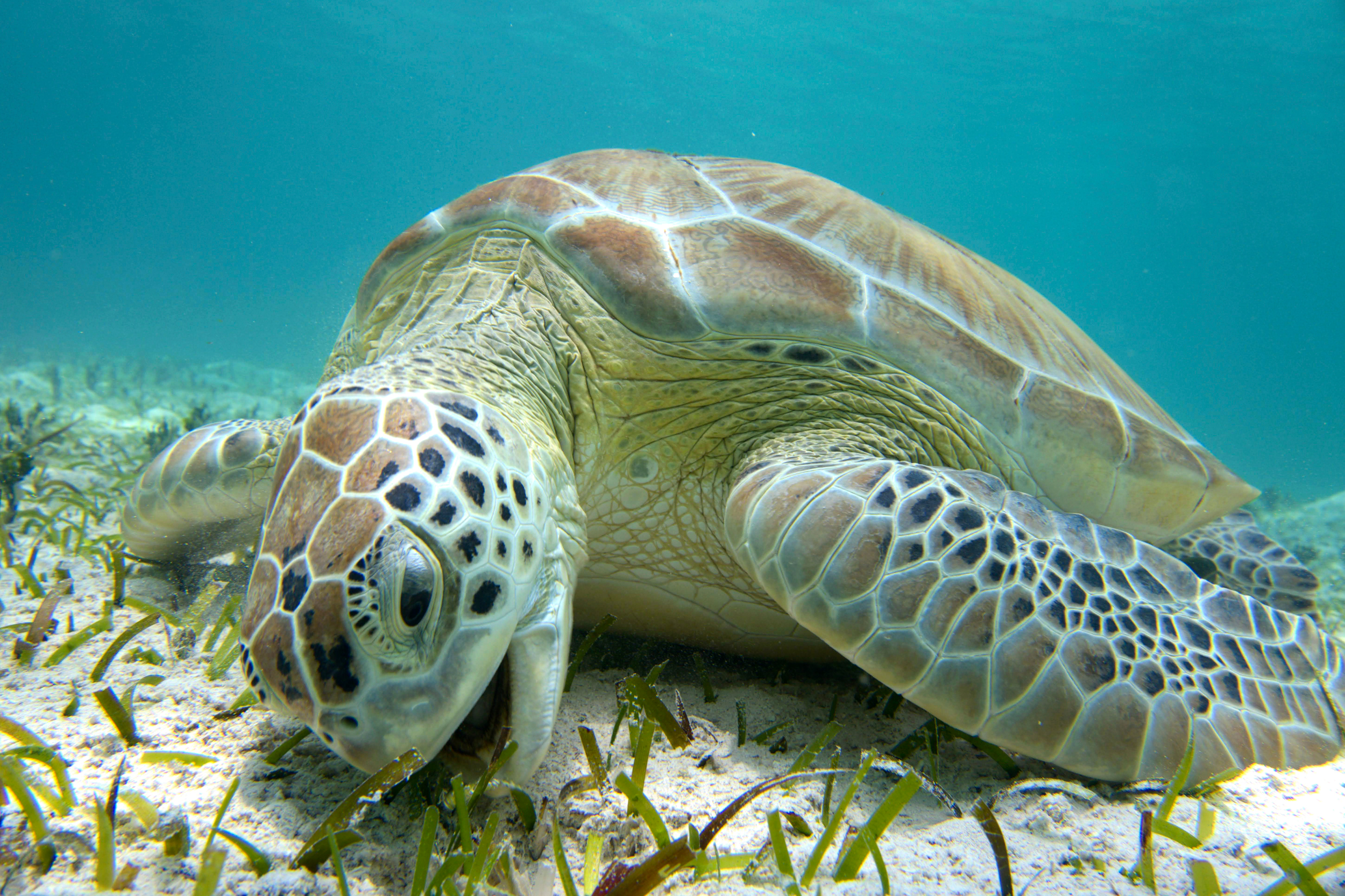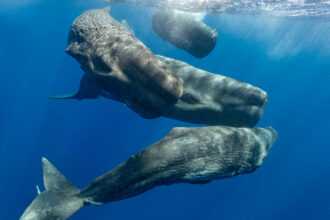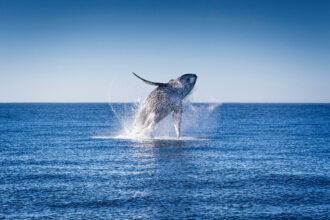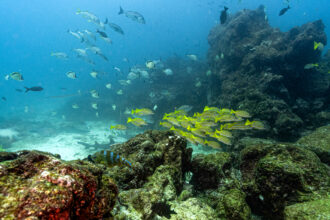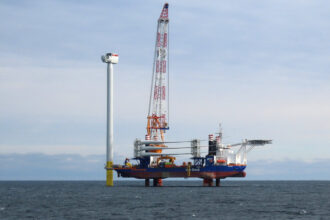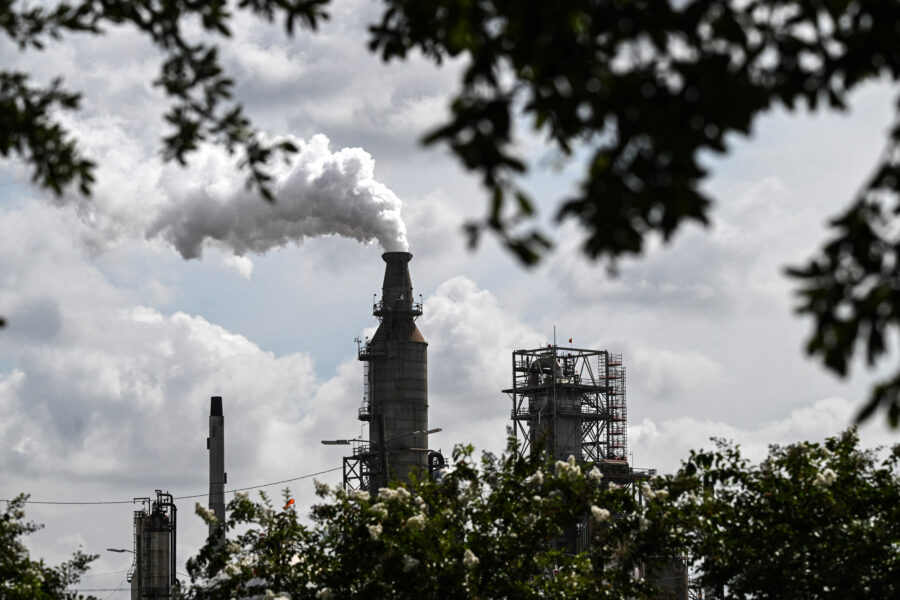In the shallow turquoise waters off the island of Providenciales in Turks and Caicos—a British overseas territory south of the Bahamas—large adult green sea turtles rest on the sandy seafloor, grazing on seagrass. Juveniles surface for air as they swim through mangrove forests, while others tuck themselves into the shadows of coral reef crevices. It’s a scene of quiet abundance that can’t be taken for granted.
For more than 40 years, green sea turtles teetered on the brink of extinction around the world, their numbers decimated by commercial hunting of the animals for their meat, harvesting of their eggs and destruction of their nesting beaches as seaside developments took over coastlines. Many have been fatally ensnared in fishing gear or choked by drifting plastic debris.
Yet, despite these threats, decades of persistent conservation efforts have slowly helped reverse the species’ decline.
Earlier this month, the International Union for Conservation of Nature (IUCN) reported that the global population of green turtles has increased nearly 30 percent since the 1970s, thanks to a suite of international actions aimed at saving the animals.
“The overall global increase absolutely reflects effective, consistent conservation work by thousands of people for decades at literally hundreds of locations around the world,” said Bryan Wallace, a wildlife ecologist and coordinator of the IUCN marine turtle specialist group, a volunteer network of about 300 sea turtle experts who monitor and protect the world’s seven species of sea turtles.
Since the 1970s, a web of protections has supported the animals’ recovery. International bans have been placed on the commercial trade of sea turtles. An increasing number of national laws prohibit fishing them for their meat and harvesting their eggs. Community-led initiatives have been aimed at guarding nesting beaches from poachers and rising seas that threaten to flood the turtles’ nests.
Specialized gear has also been developed to help reduce the accidental capture of turtles in fishing nets, like turtle-excluder devices. These metal grids are fitted into the back of trawlers focused on catching shrimp and other fish to allow large animals to escape if they’re caught.
“It’s like a trap door that pops it out,” said Roderic Mast, a marine biologist and co-chair of the IUCN marine turtle specialist group, of the excluders. Fishing without such devices remains one of the most severe threats to sea turtles.
Prior to this invention, Mast—also the co-CEO and president of an ocean conservation nonprofit called Oceanic Society—said the turtles would “get stuck in the back of the net with the shrimp and the fish and everything else, and they would drown.”
The IUCN’s marine turtle specialist group compiles global data on the animals’ nesting grounds and hatchling success rates to estimate their populations. The group also gathers comprehensive information about the compounding threats they face. Scientists from the group submit their findings to the IUCN so that the organization can update their Red List of Threatened Species.
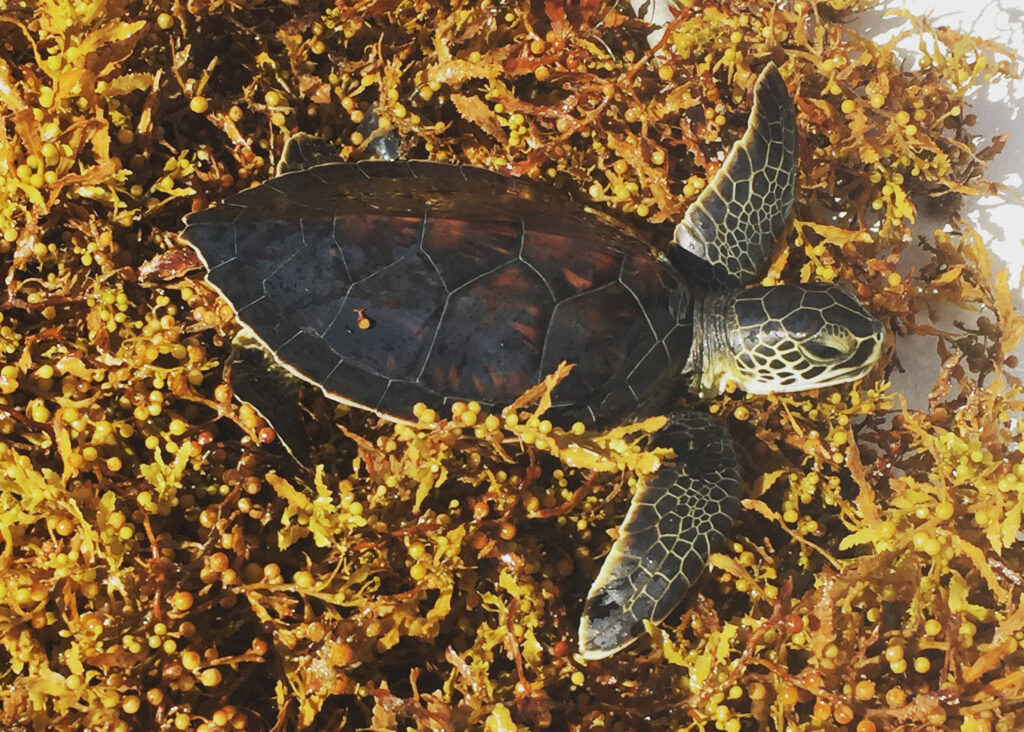
This list tracks the extinction risk of more than 170,000 animals, plants and fungi. Each species is assigned to one of nine categories, ranging from “least concern” to “extinct,” based on its population trends and the severity of threats it faces. Currently, 48,000 of the listed species are threatened with extinction.
In the 1980s, there were so few green turtles left after years of having been commercially harvested they were listed by the IUCN as endangered, a designation indicating a very high risk of extinction. But in IUCN’s most updated red list, the green sea turtle is reclassified as a species of least concern—with some exceptions.
An Uneven Recovery
While the global population has increased overall, not all green turtle subpopulations are recovering equally, Wallace said. In the South Atlantic, for example, where the species is no longer considered endangered, an estimated 77,000 mature turtles now inhabit the region, and their numbers appear to be rising. But in the Central South Pacific, the trend is reversed. That subpopulation is declining, with fewer than 6,000 mature turtles remaining across areas that include American Samoa, the Cook Islands, Fiji and several other island nations.
In some instances, the lack of protections for the transboundary species in one country is affecting how many show up to nest in another.
Costa Rica, for example, hosts one of the largest green sea turtle rookeries in the Western Hemisphere and is one of the most important nesting sites globally. But in the last 10 years, Wallace said, there has been a significant reduction in nesting females arriving in Tortuguero, a national park on the country’s northern Caribbean coast, known as the “land of the turtles.” Wallace said it’s likely that a long-term commercial fishery of the turtles in nearby foraging grounds in Nicaragua is driving the decline.
Even in countries that have some of the highest abundances of green sea turtles in the world, like Australia, the animals are considered by the IUCN as vulnerable species, primarily due to climate change.
Since the 1970s, Raine Island, off the Great Barrier Reef, has supported the world’s largest green turtle rookery. For years, Wallace said, as many as 150,000 nests have been laid there each year. But in the last decade, hatchling success has dramatically declined on the low-lying island due to sea level rise, salt water intrusion, increased sand temperatures and erosion.
“We refer to it as a population time bomb,” Wallace said. It’s not going off yet—there’s still the same number of adult nesting females arriving to nest. But since many of their babies are not hatching anymore, their population is likely to eventually decline.
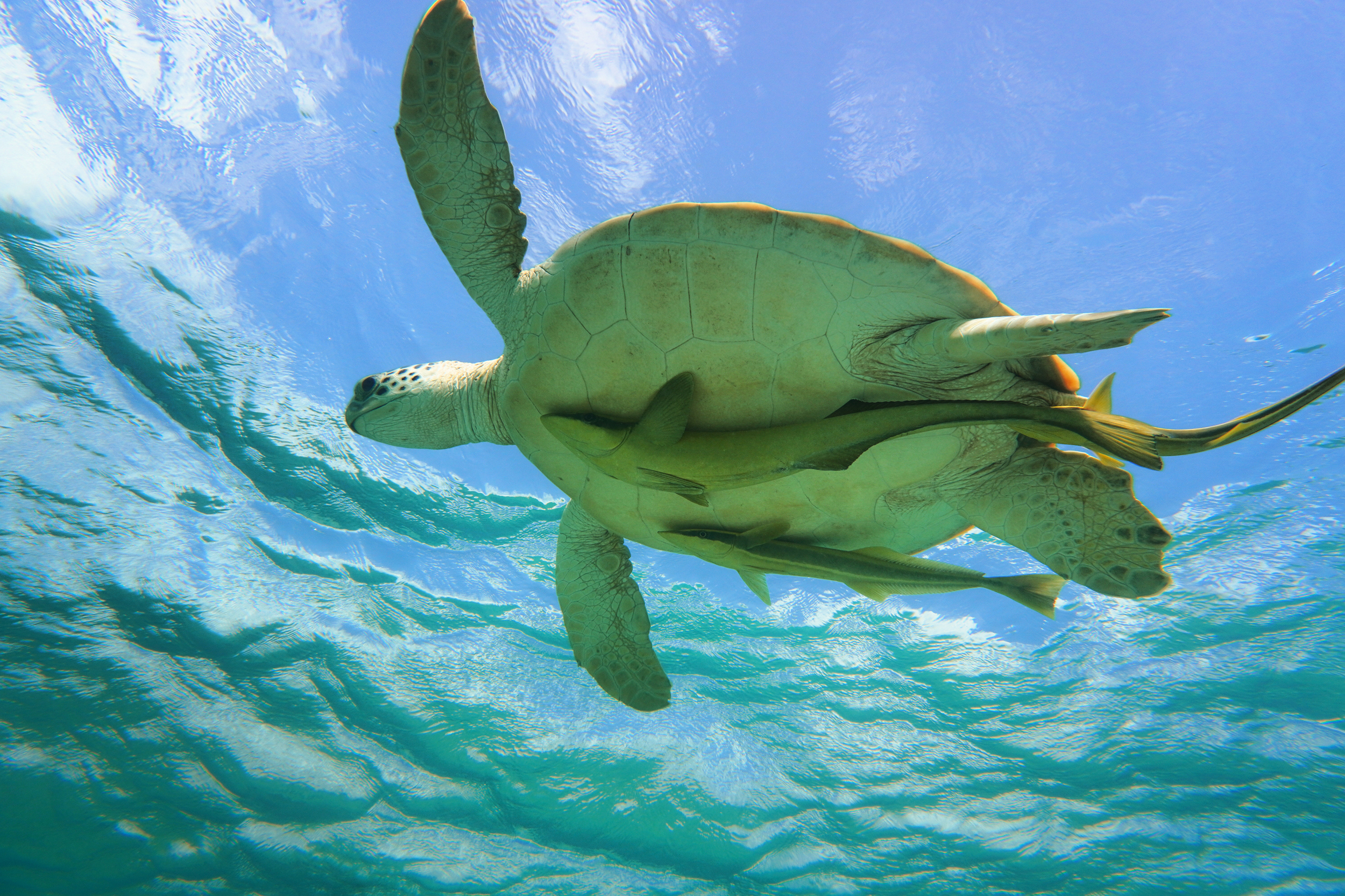
There will be entire generations of hatchlings that won’t reach adulthood to breed and nest on Raine Island in the future, he said. Similarly, in Florida, increasingly severe weather is threatening one of the most important nesting areas for green sea turtles in the United States.
Within the Archie Carr National Wildlife Refuge—a 20-mile stretch of protected beach that stretches along the state’s Atlantic coastline—more than 20,000 green turtles came ashore to nest this year. But stronger storms and rising seas are taking a toll on both the turtles and their habitat.
“We also are experiencing storm events that are just the worst ever, historic levels of winds and tides and storm overwash,” said Kate Mansfield, an associate professor at the University of Central Florida, where she directs the Marine Turtle Research Group, which has conducted research on sea turtles in the refuge for more than 40 years. “Each year, we kind of brace for what the hurricane season is going to look like. Disproportionately, green turtles, at least in Florida, on our nesting beaches, are the ones that are hit the hardest by these storm events.”
The green turtles do have one advantage, however, she said. Unlike leatherbacks and loggerheads, which nest in the refuge earlier in the year during hotter months, some greens are coming ashore into the fall, allowing their nests to incubate in cooler temperatures.
Warmer temperatures generally skew the sex ratios of sea turtles. “With climate change, one of the concerns is that we are having turtles lay nests in these really hot environments where they’re going to be generating a whole bunch of females,” Mansfield said. In other cases, when the temperatures become too unbearable, she said, “the embryos may die because they just can’t develop.”
But, the green turtles’ nests that are laid in cooler temperatures may eventually help balance out the gender ratios of their population, Mansfield said.
It’s important to note these caveats in the success of green turtle recovery in order to know where to focus conservation efforts, Mast, from Oceanic Society, said. “As a conservationist, where am I going to put my money, my effort, my attention?”
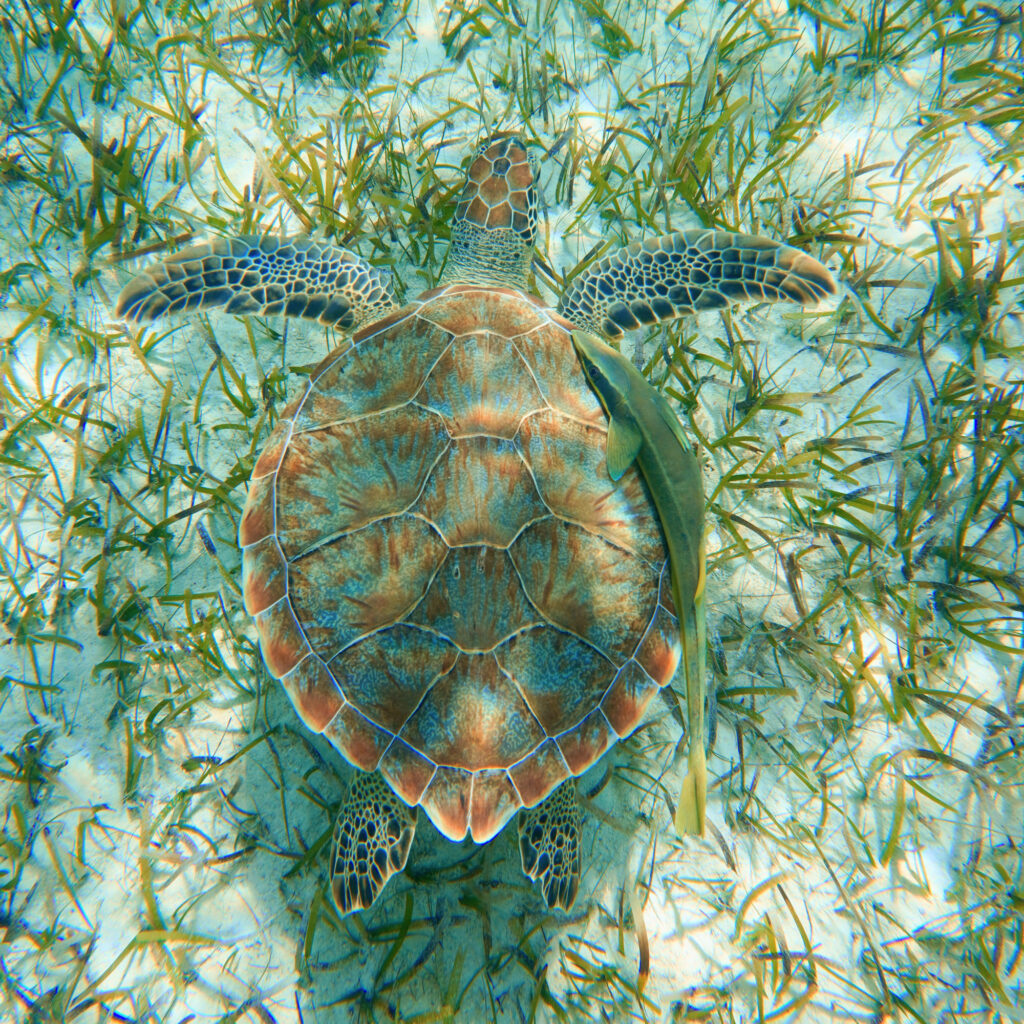
Green turtles play a vital role in maintaining the health of coastal ecosystems, and losing them could have ripple effects at sea and on land. As herbivores, adult green turtles graze on seagrass beds like underwater landscapers, keeping the meadows trimmed and healthy. Their constant grazing promotes new growth and strengthens root systems.
When nesting on land, sea turtles act as natural nutrient transporters: the remains of unhatched eggs and shells enrich sandy beaches, supporting stronger dune vegetation and more resilient coastlines.
A Bright Spot Amidst Widespread Biodiversity Loss
The new green sea turtle classification was announced at the IUCN World Conservation Congress in Abu Dhabi in early October, where it stood out as a bright spot in an otherwise sobering discussion on global biodiversity loss.
According to the organization’s latest assessments on threatened species, three species of Arctic seals—the hooded seal, bearded and harp seals—are edging closer to extinction as global warming melts the sea ice they rely on for breeding, raising their pups, molting, resting and reaching feeding grounds.
This story is funded by readers like you.
Our nonprofit newsroom provides award-winning climate coverage free of charge and advertising. We rely on donations from readers like you to keep going. Please donate now to support our work.
Donate NowMore than half of the world’s bird species are also in decline, driven largely by habitat loss from agricultural expansion and logging. And four species were declared extinct: three small Australian mammals including the marl, the south-eastern striped bandicoot and the Nullarbor barred bandicoot, as well as a flowering plant once native to the Hawaiian Islands, the Delissea sinuata.
Many conservationists hailed the sea turtles’ comeback as a landmark milestone for marine conservation.
“It’s very exciting,” said Kara Dodge, a research scientist at the Anderson Cabot Center for Ocean Life at the New England Aquarium, who focuses on sea turtle behavior and ecology. “It’s nice to have an occasional win in the sea turtle world, which is rare,” she said.
Most other sea turtle species are still threatened with extinction.
Eastern Pacific leatherback sea turtles, for example, are classified by the IUCN as critically endangered —just two steps away from extinction—with only about 600 mature adults estimated to remain in the region.
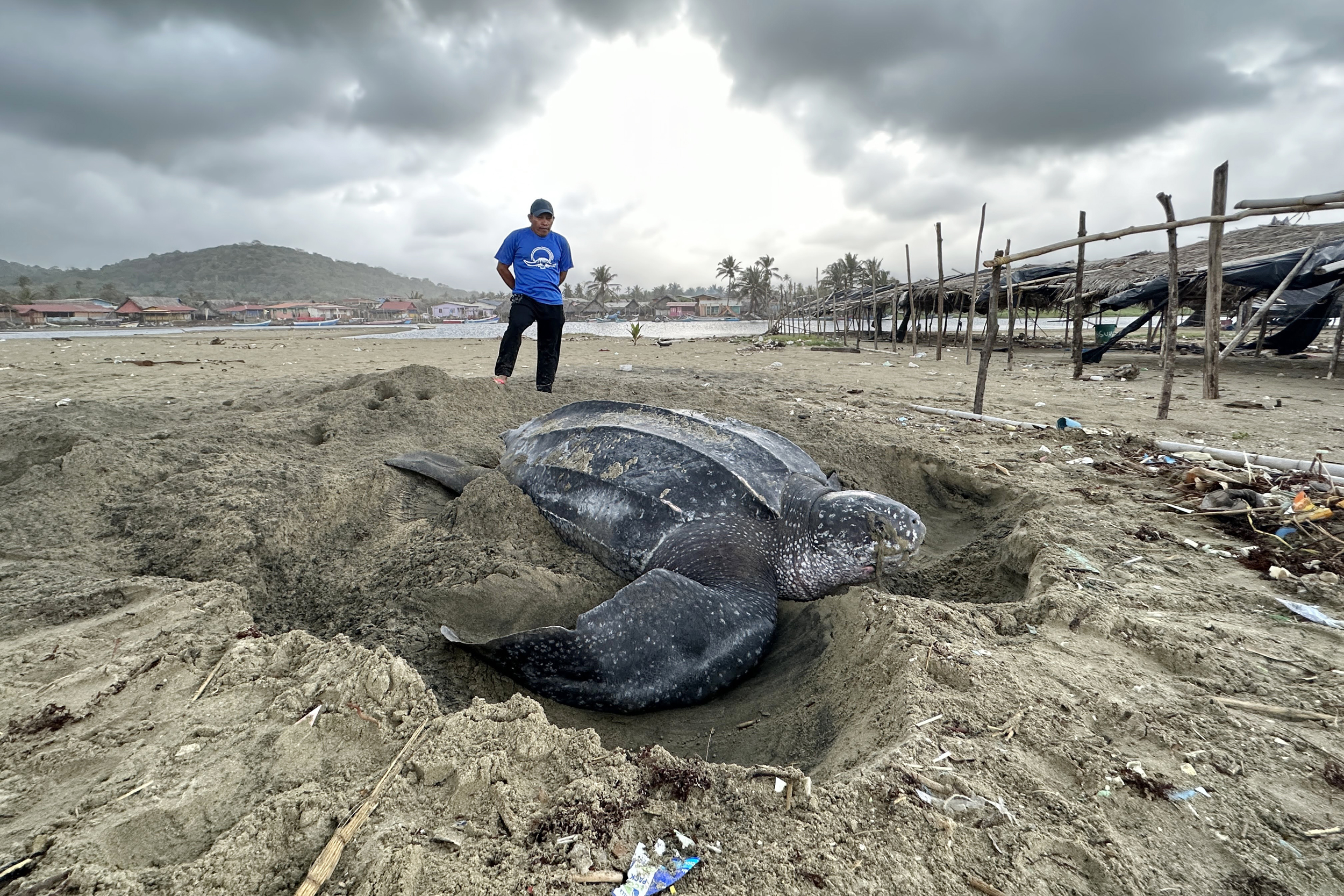
Entanglement in fishing gear is one of the greatest threats they face. Similarly, Kemp’s ridley turtles, found primarily in the Gulf of Mexico and along the Atlantic coast of the United States from Florida to Nova Scotia, also face severe extinction risk due to drowning in fishing gear, habitat loss and pollution. The 2010 Deepwater Horizon oil spill killed an estimated 86,500 juvenile Kemp’s ridley turtles, according to the New England Aquarium.
As encouraging as the green turtle’s recovery may be, scientists warn efforts must be maintained—not scaled back—to sustain their positive trajectory.
In Turks and Caicos, where a legal turtle fishery still operates, conservationists already struggle to secure funding for monitoring and protection, said Katharine Hart, a sea turtle biologist and the country coordinator for the Wider Caribbean Sea Turtle Conservation Network (WIDECAST). She worries that the “least concern” label could weaken the incentive to protect them.
“If globally it’s being announced that they’re no longer under any threat, then it takes away part of our leverage to conserve them,” she said.
Instead, she said, the reclassification should be used as proof that conservation works and as motivation to strengthen protections that preserve key turtle habitats like seagrass meadows, mangroves and beaches currently being threatened by coastal development, for example.
It will not take long to quickly undo decades of progress if concerted protective actions do not continue to safeguard the green sea turtle, said Mansfield, from the University of Central Florida.
“If all of a sudden, everybody is like, ‘Whoa!, we can start harvesting green turtles again,’ or ‘We can start doing things in a different way,’ that may not be in the best interest of the sea turtles. I think very quickly, we can fall back to having these animals back on the endangered list,” she said. “We still need to maintain the momentum of the success and maintain it over generations—turtle generations.”
About This Story
Perhaps you noticed: This story, like all the news we publish, is free to read. That’s because Inside Climate News is a 501c3 nonprofit organization. We do not charge a subscription fee, lock our news behind a paywall, or clutter our website with ads. We make our news on climate and the environment freely available to you and anyone who wants it.
That’s not all. We also share our news for free with scores of other media organizations around the country. Many of them can’t afford to do environmental journalism of their own. We’ve built bureaus from coast to coast to report local stories, collaborate with local newsrooms and co-publish articles so that this vital work is shared as widely as possible.
Two of us launched ICN in 2007. Six years later we earned a Pulitzer Prize for National Reporting, and now we run the oldest and largest dedicated climate newsroom in the nation. We tell the story in all its complexity. We hold polluters accountable. We expose environmental injustice. We debunk misinformation. We scrutinize solutions and inspire action.
Donations from readers like you fund every aspect of what we do. If you don’t already, will you support our ongoing work, our reporting on the biggest crisis facing our planet, and help us reach even more readers in more places?
Please take a moment to make a tax-deductible donation. Every one of them makes a difference.
Thank you,


